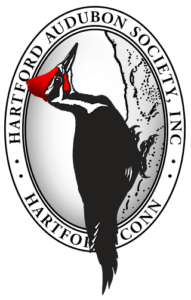Ten birders met on a cool, foggy morning for what everyone hoped would be a great day of birding. After bidding farewell to a noisy construction crew that was preparing to pave part of the parking lot (yes, at 7 a.m. Sunday morning), we first made a quick pass through Glastonburys Riverfront Park. Our most notable observations were two Northern Parulas chasing each other among the tree tops. A Great Egret and a few Great Blue Herons stalked the banks of the Connecticut River, while a lone Double-crested Cormorant flew quickly by. Unexpectedly, loudspeakers blared at a fundraising event farther up the river.
As we entered Glastonbury Meadows, mostly free of distracting sounds, the fog began to burn off, followed by sunshine and temperatures in the upper 70s; an ideal day for birding. We focused on the marsh area, which has expanded further due to a beaver dam on Hubbard Brook. Our patience was rewarded by vocalizing Soras and Virginia Rails, a few of which we ultimately glimpsed walking among the marsh vegetation close to the dirt road. Chattering Marsh Wrens were heard frequently, some of which perched out in the open to the delight of many birders. We detected 12 in all (heard or seen), suggesting a very successful breeding season at this site. The edge of the overgrown horse pasture had some great birds, including Dickcissel, Grasshopper Sparrow and three Lincolns Sparrows. A Pied-billed Grebe, quite rare for the Meadows, was spotted swimming and diving in a flooded swale in the pasture. We will be sure to check for evidence of nesting next spring, given what seems to be prime habitat for this species.
On our way out, an adult Bald Eagle flew over the Connecticut River, a large flock of Bobolinks passed overhead and a Wilsons Warbler made a momentary appearance in a dense thicket by the river. In all, we saw 60 species.
Respectfully submitted,
Bill Asteriades and Andrew Dasinger

Leave a Reply
You must be logged in to post a comment.